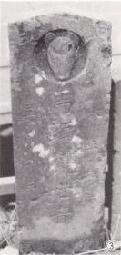Batō Kannon Tower


The worship of Bato Kannon is believed to have started around the Nara period, but it was not very active until it became more prominent in the late Edo period. This is thought to be due to the widespread use of horses in rural areas and the increasing importance of their roles. As a result, stone monuments were erected in various places to commemorate this faith. Horses were often used for agricultural work and transporting goods, and it is believed that the practice of memorializing beloved horses that died from illness or accidents also increased. Additionally, prayers for safe travels, abundant harvests, and peace began to be offered alongside this faith.
When you see the Bato Kannon Towers in the city, there are 45 stone towers that have remained from the late Edo period to the 30th year of the Showa era. Among these, we will introduce the Bato Kannon Tower from the Edo period, which has a long history.
The most representative one is located in Nakajima, Yanokuchi, where 14 horse-headed Kannon stone towers are lined up along the old road. The stone tower in the center was built in the 13th year of the Bunka era (1816) and is the oldest horse-headed Kannon tower in the city. It is also the largest stone tower (height 184 cm) and is notable for its authentic bas-relief of the horse-headed Kannon. The base stone of the tower is engraved with the names of the donors, starting with the residents of Yanokuchi Village, as well as the names of 19 neighboring villages, indicating that the tower was constructed with the cooperation of these villages. Since the old road where the stone tower stands leads to the Yanokuchi ferry terminal, it is believed that the villages using the ferry built it to pray for safe transportation. This stone tower has been designated as a city cultural property as a material that demonstrates the role of horses and the importance of the ferry terminal.
Bato Kannon Tower in the city
Looking at the distribution of the Batō Kannon Towers located in the city, 18 out of a total of 45 are in the Yanokuchi area, indicating a concentrated distribution. Of these, 14 are located along the old road near the Yanokuchi ferry terminal, and excluding these, the distribution is almost the same as in other areas. Overall, the quantity is not large, and they are dispersed across various regions, mainly along the old roads in the city.
The oldest was built in the 13th year of the Bunka era (1816), and the newest in the 39th year of the Showa era (1964), spanning a very long period from the late Edo period through the Meiji, Taisho, and Showa eras. If we categorize the stone monuments built over approximately 150 years by era, there are 6 from the Edo period, 16 from the Meiji period, 9 from the Taisho period, and 9 from the Showa period, indicating that the Meiji period was the peak.
When looking at the shape of the stone pagodas, the square pillar shape and the koma shape (where the top of the stone pagoda resembles a shogi piece) are predominant, which can be considered a general trend. Additionally, the condition of the surface of the stone pagodas is mostly inscribed with only the characters "Bato Kannon," and the stone statue of Bato Kannon represented with three faces and eight arms is found only in one example in Yanokuchi and Nakajima. There are three examples where a horse's face is carved above the characters.
Here are some of the Horse-Head Kannon Towers that can be seen in the city.
1 is located near the Omaru Yatogawa Bridge and is the second oldest structure in the city, built in the 13th year of the Bunsei era (1830). It was constructed by the community of Omaru village.
2 is located on the north side of Hirao's nearby park, and it is evident that it was built to commemorate a beloved horse, as the horse's name and year of death are engraved on the side of the stone monument.
3 is located facing the boat landing on Oshitate, where you can see the horse head relief.



Distribution by Region
| Region | Quantity |
|---|---|
| Yanokuchi | 18 |
| Oshitate | 3 |
| Higashi-Naganuma | 6 |
| Omaru | 1 |
| Momura | 3 |
| Sakahama | 8 |
| Hirao | 6 |
Total: 45
Please let us know your feedback on how to make our website better.
Inquiries about this page
Inagi City Local History Museum
1-9-1 Hirao, Inagi City, Tokyo 206-0823
Phone number: 042-331-0660 Fax number: 042-331-0660
Contact the Lifelong Learning Division, Department of Education, Inagi City



















